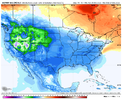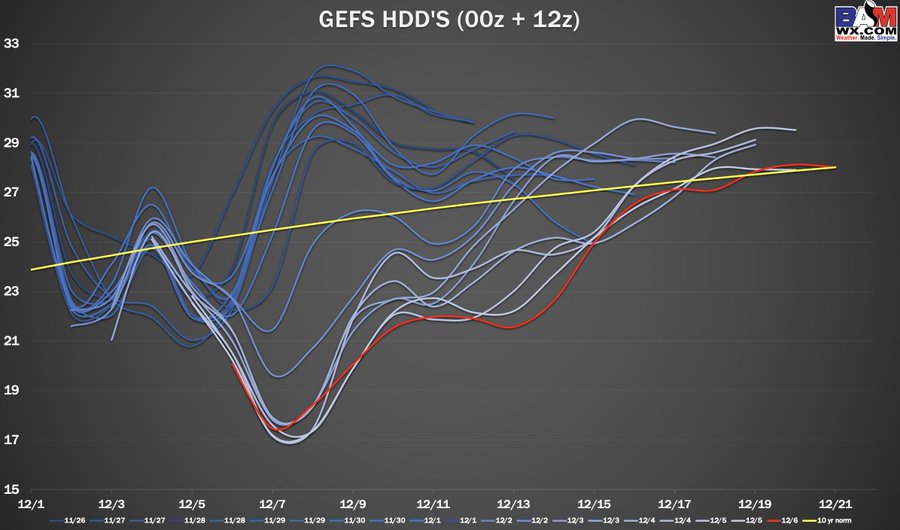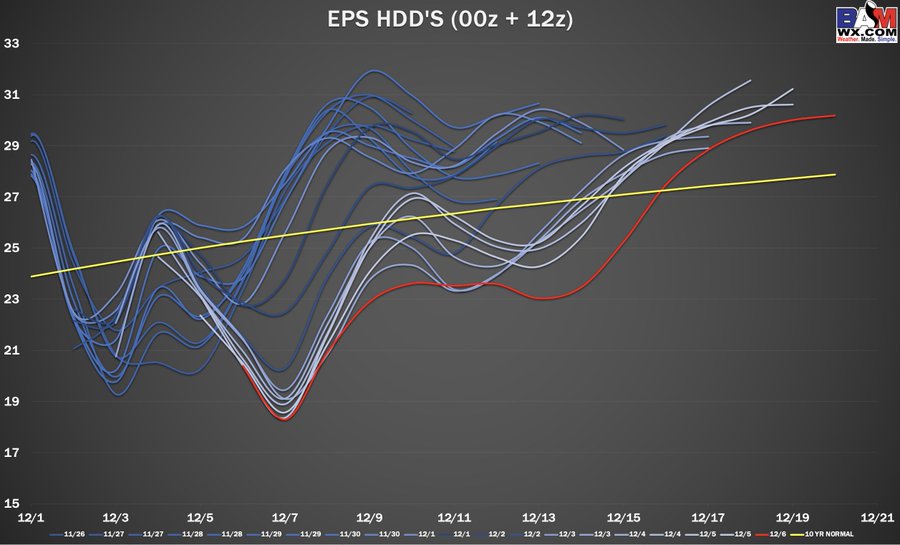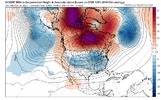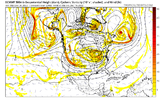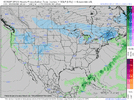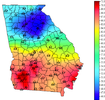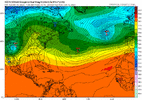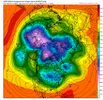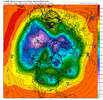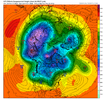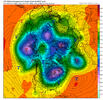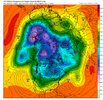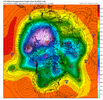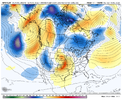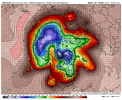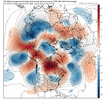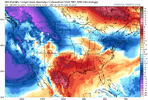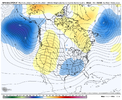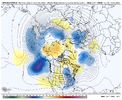This was the CMC at 240, probably the best look from all the Ops for that period. A weaker lobe of the PV is trapped in central and eastern Canada and the northern and northeastern US under the blocking over the top.
View attachment 124899
Here's the Euro. Not far off from the Canadian. The EPOish ridge is more eastward and you have a pretty strong block over the top. The big cold is trapped on the other side of the globe, but the air over here would be chilly nonetheless (once the storm in the upper midwest moves east), particularly with what the CMC is showing. I'm not sure how the Euro would evolve from here. There are plenty of options, but the low pressure shown over/near the Aleutians is definitely better than the ridging that has been there forever.
View attachment 124900
Now, here's the 6z GFS at 384. Absolutely horrible map that needs no further commentary.
View attachment 124901
And here's the 0z GFS at 384. That's a mic-drop called-the-shot homerun. Why oh why can't this be at hour 48?
View attachment 124904
Here's the 0z GFS at 240. Trough west, ridge east. Terrible. But we know where that evolves to, as shown above.
View attachment 124903
And the 6z GFS at 240. Similar to 0z, though some of the blocking features are different. This map is also terrible and we see above that it evolves to a totally different direction.
View attachment 124902
My big takeaway is that we only have one run (maybe two if you count the awesomely reliable 240 CMC) with legit big cold on our side of the world. Until that changes, even if the ensembles show great 500 mb patterns, it's going to be hard to snow for most of the south and southeast.
I'm hopeful that good things out in time work inside D10 at some point and then better things start finding more consistency out at range. If we're still in this same spot one week to ten days from now, we'll need to put the guarantee stamp back up in the attic and look for the white flag.

